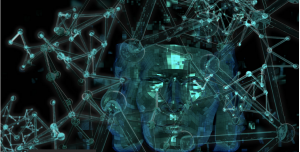This journal article, written in collaboration by three authors, explores our place-based BC Indigenous languages. One of the authors, Layla Rorick / Chuutsqa, is a member of University of Victoria and spends a lot of her time creating resources and lessons that can be used to revitalize and share traditional languages. The journal article explains that there are 34 Indigenous languages in BC and all of which are endangered, and explores the risk of losing these languages and there connection to identity, history and appreciation. The author’s suggest an “Indigenized approach to language” that more authentically transfers language from a fluent speaker to a learner. There are key learning “building blocks” that the authors suggest that include shifting from “rote memorization” to a more effective approach of students being able to listen, connect to what they know and also create new words. This demonstrates not only the revitilization of a traditional language but also the act of creation to honour innovation and change.
Journal Citation:
Rosborough, T., Rorick, L., & Urbanczyk, S. (2017). Beautiful Words: Enriching and Indigenizing Kwak’wala Revitalization through Understandings of Linguistic Structure. The Canadian Modern Language Review / La revue canadienne des langues vivantes 73(4), 425-437. https://www.muse.jhu.edu/article/678834.
